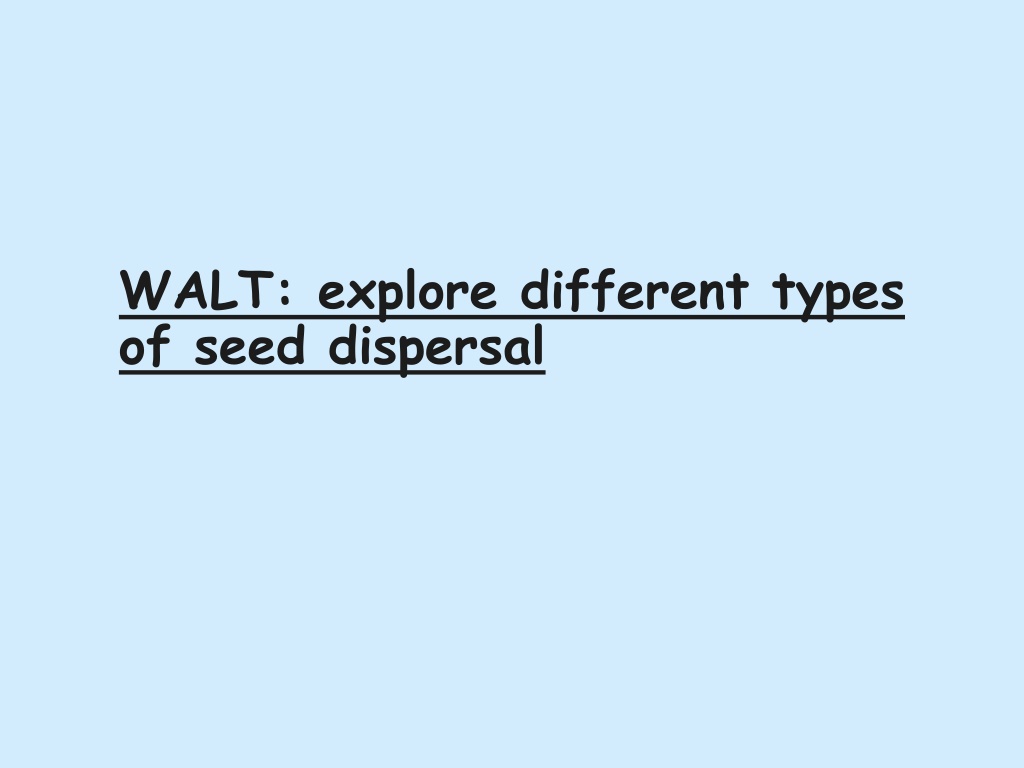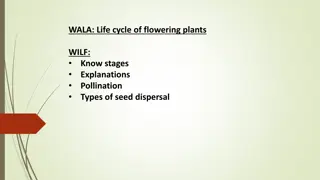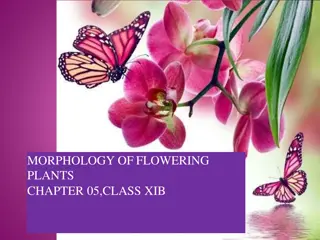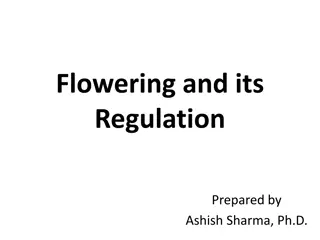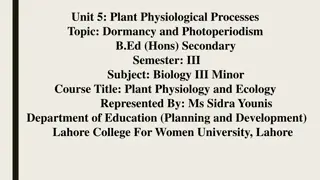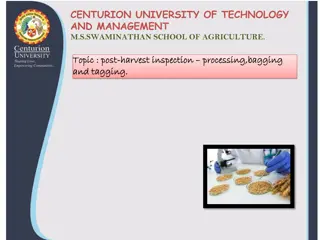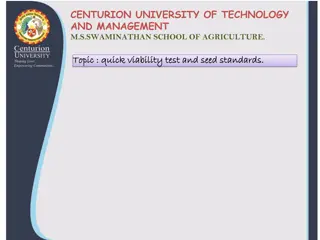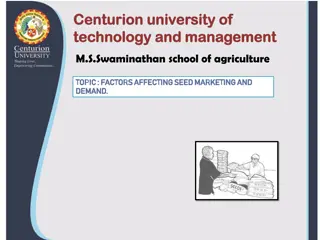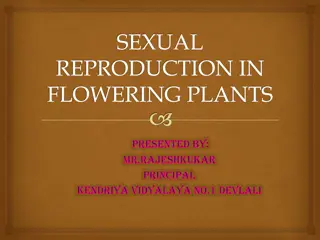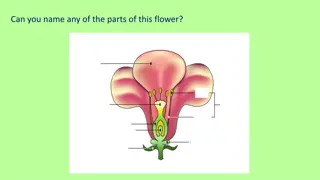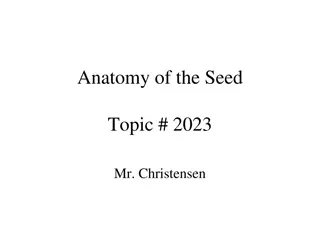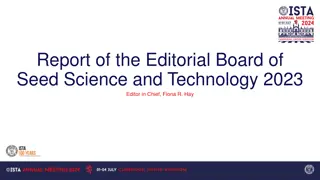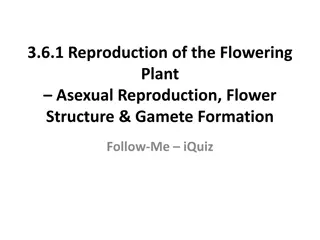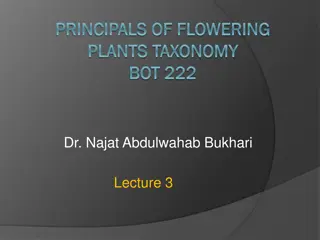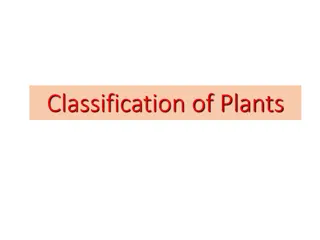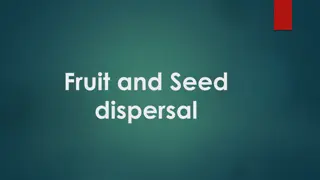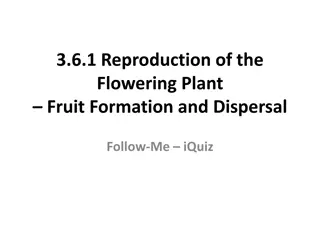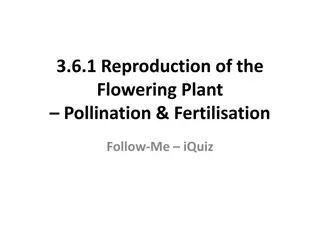Understanding Seed Dispersal in Flowering Plants
Explore the fascinating world of seed dispersal in flowering plants, from wind dispersal to bursting pods and shaking mechanisms. Discover the various methods plants use to spread their seeds and ensure their survival. Dive into the stages of a flowering plant's life cycle and learn how germination, pollination, and seed formation play crucial roles in their propagation. Enhance your knowledge with insightful images and informative resources provided in this engaging content.
Download Presentation

Please find below an Image/Link to download the presentation.
The content on the website is provided AS IS for your information and personal use only. It may not be sold, licensed, or shared on other websites without obtaining consent from the author. Download presentation by click this link. If you encounter any issues during the download, it is possible that the publisher has removed the file from their server.
E N D
Presentation Transcript
WALT: explore different types of seed dispersal
Can you remember the different stages of a flowering plant life cycle from last week?
Life Cycle of a Flowering Plant The life cycle of a flowering plant shows the changes that happen to the plant over the course of its lifetime. The main stages of the life cycle of a flowering plant are: 1 2 3 4 5 Germination Growing and flowering Pollination Fertilisation and seed formation Seed dispersal Watch the video below to for a brief introduction: https://www.bbc.co.uk/bitesize/topics/zpxnyrd/articles/z2vdj xs
How do flowering plants disperse their seeds? Let s take a look at seed dispersal in a bit more detail
https://www.bbc.co.uk/bitesize/topi cs/zxfrwmn/articles/z28dpbk
Wind Sycamore helicopters and dandelion clocks both have fruits which have adapted to use the wind to carry the seeds away when the seeds are ready. Photos courtesy of @Doug88888, ian boyd (@flickr.com) - granted under creative commons licence - attribution
Bursting Some plants have pods full of seeds which will burst, showering the ground with seeds, like the Himalayan Balsam seed. Peas are another example of a plant bursting open to disperse its seeds. Photos courtesy of Ben Grader(@flickr.com) - granted under creative commons licence - attribution
Shakers Some plants rely on being shaken to disperse their seeds. When poppies have produced their seeds and have finished flowering all that is left is a long stem with a dried seed pod. These pods have small holes at the top and rely on wind to shake them to scatter the seeds. This method doesn t send the seeds very far. Yucca Campestris seeds also need to be shaken. Yucca Campestris seeds Poppy seeds Photos courtesy of janerc (@flickr.com) - granted under creative commons licence - attribution
Water Some plants rely on water to disperse their fruits. These will either grow on the water or by the side of water. Water lilies live on the water so they use the water to disperse their seeds. They make very light seeds which will float away on the water for a while, then sink to the bottom of a pond to grow a new lily. Lily seeds Water lily Photos courtesy of egonwegh(@flickr.com) - granted under creative commons licence - attribution
Palm tree seeds are very light which helps them float and grow another palm tree elsewhere. Palm trees that grow by the oceans drop their seeds which can be swept great distances by the ocean s currents. Coconuts are well known travellers. Palm tree seeds Willow and silver birch trees often grow near water. Their seeds are very light which enables them to float away on water (the silver birch seed is also fluffy which helps them to be dispersed by the wind too). Willow tree seeds Photos courtesy of Dave_A_2007(@flickr.com) - granted under creative commons licence - attribution
Catching a Ride Some plants such as cockleburs have developed to grow tiny hooks on their fruits which hook on to animals (or people) that pass by the plant. Eventually they will drop off on to the ground. Burdock seeds This dog has been covered in burs. Photos courtesy of GanMed64s (@flickr.com) - granted under creative commons licence - attribution
Seeds as Food Some plants make tasty fruits. This is to encourage animals (and people!) to eat the fruits. The seeds then pass through the animal unharmed and out the other end with a ready supply of fertiliser (not tasty in the slightest quite the opposite). This method ensures the seed is given nutrients to help it grow. What types of fruits can you think of that are eaten by animals and people with seeds inside?
Drop and Roll! Some fruits, such as horse chestnuts, have a casing round them which cracks open when it hits the ground. The fruit inside then rolls away from the tree. You can tell which horse chestnuts in the trees are ripe because their casings have already begun to split open before they drop.
Main Task Write the following headings in your book and then write/sort the different plants into the write groups based on how they disperse their seeds. You may need to research each seed type on the internet to help you decide which category they belong to.
